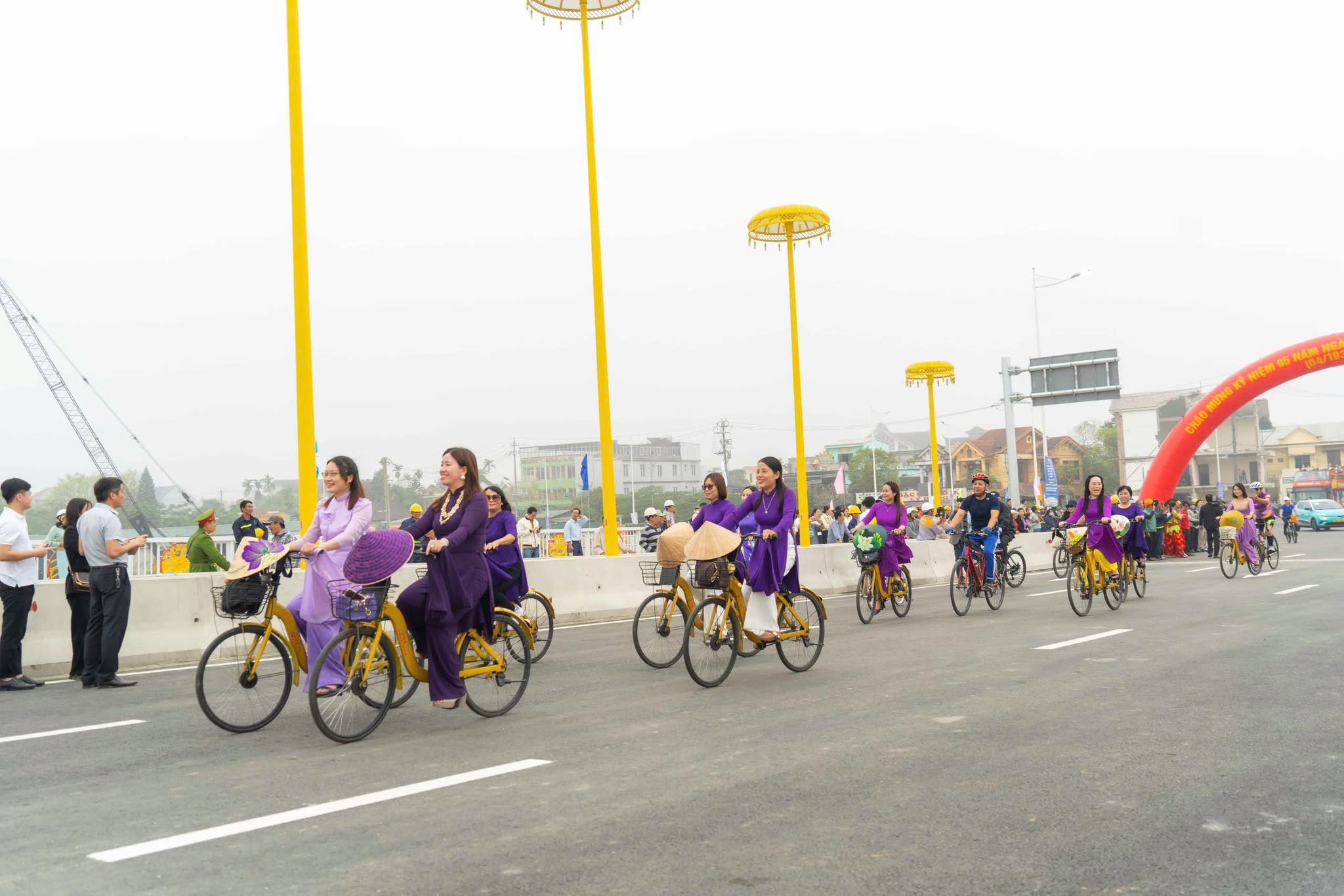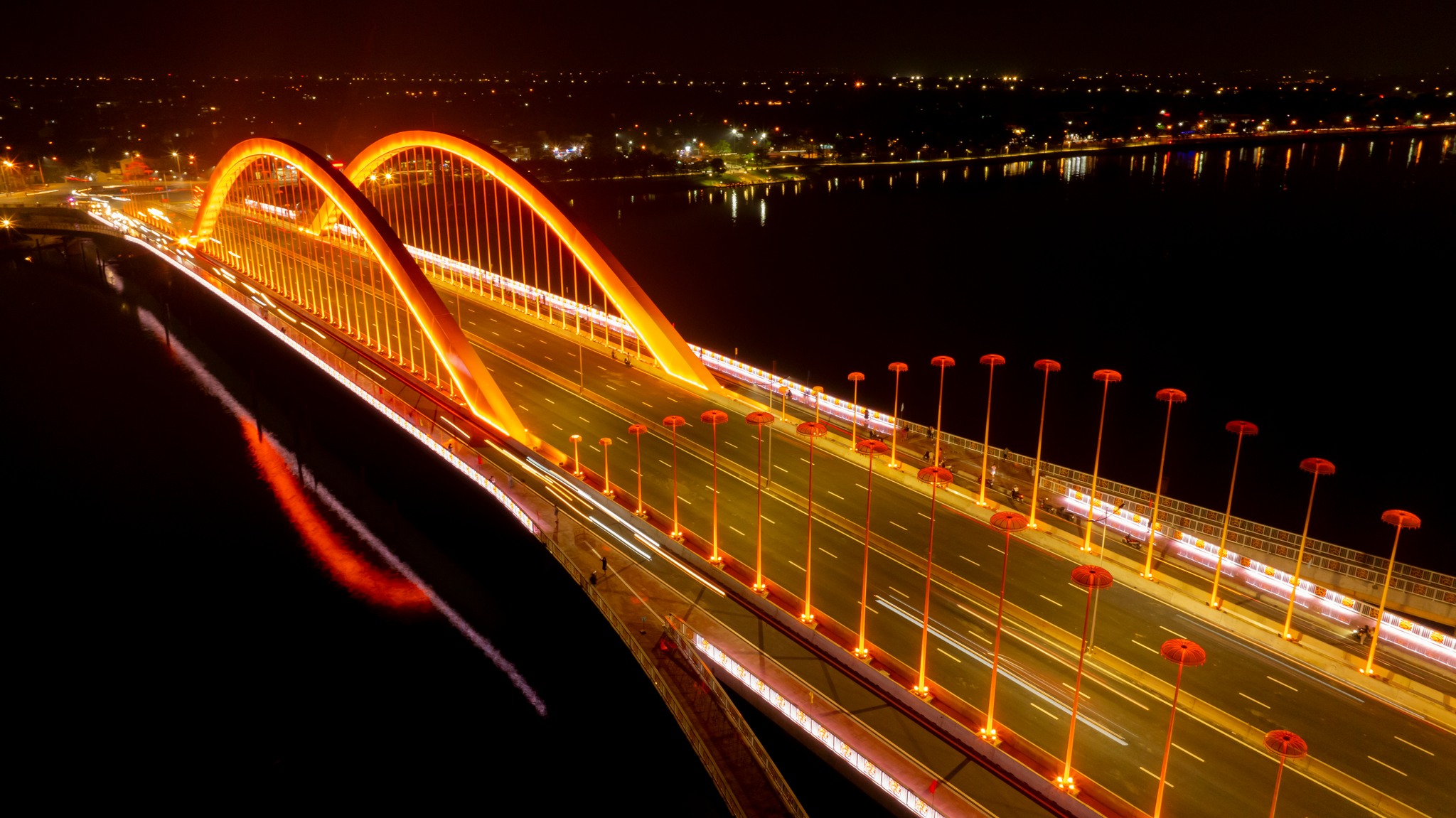A Symbol of Hue City
Finnish chief engineer Antti Karjalainen—designer and project director of the Nguyen Hoang Bridge (across the Perfume River in Hue)—is also co-author of several renowned bridges in Vietnam such as Binh Bridge and Rao 2 Bridge (Hai Phong), Tran Thi Ly Bridge (Da Nang), Ba Son Bridge (Thu Thiem 2, Ho Chi Minh City), and Cao Lanh Bridge (Dong Thap).
Karjalainen shared that through studying Hue’s rich history, his team learned a legendary tale: When Lord Nguyen Hoang, the first Nguyen ruler, came to govern the Thuận Hóa region, he journeyed along the Perfume River in search of a site to establish his capital. He discovered a hill shaped like a dragon turning its head—a sacred place that later became home to the iconic Thien Mu Pagoda. Local folklore also speaks of a mythical crane, a bird symbolizing longevity and wisdom, often appearing in Vietnamese temples as a spiritual link between the natural and divine worlds.
These stories inspired the bridge’s design concept, “The Crane Facing Thien Mu,” with the bridge’s arches symbolizing the outstretched wings of a crane gracefully soaring across the river, in reverence to the sacred pagoda. The warm, regal yellow—the color of emperors—was chosen as the dominant tone of the bridge, reflecting power and honoring Hue’s royal legacy. Even the V-shaped piers resemble the form of cranes gathering peacefully at this spiritually significant site.
The result is a “flying bird” arch suspension bridge, harmoniously merging with Hue’s rich historical fabric. This design tells a story—a timeless dance between old and new—where soft curves and golden arches echo the city’s imperial heritage while leading it into the future.

Nguyen Hoang Bridge opens to traffic on Hue Liberation Day March 26
Echoes of the Imperial Court
According to Karjalainen, the design is inspired by the golden era of the Nguyen Dynasty, the grace of the flamingo, and the symbolic power of royal yellow. The architectural concept represents the fusion of nature, tradition, and modernity. The bridge structure embodies the dignity and authority of Vietnam’s emperors, particularly their deep spiritual and aesthetic connection with the Perfume River. The continued use of royal yellow throughout the bridge reinforces the theme of cultural legacy and dynastic continuity.
Another key inspiration is the elegant flamingo—a bird long admired in Vietnamese folklore and visual arts. Seen as a symbol of purity, balance, and beauty, the flamingo perfectly aligns with the bridge’s design ethos. Its gentle curves mimic the bird’s slender, elongated neck, creating an organic structure that blends harmoniously with the river’s natural landscape. The delicate arches of the bridge evoke the poised elegance of this creature—both visually stunning and structurally strong.
At night, the bridge is bathed in warm golden lights, conjuring images of graceful flamingos reflected on the water’s surface. The ethereal glow creates a dreamlike atmosphere, celebrating both the serenity of the river and the poetic spirit of Hue.
Architectural Independence in Design
According to Mr. Antti Karjalainen, the initial design of Nguyen Hoang Bridge was selected through a competitive architectural design contest. The chosen concept features a suspended arch bridge with two separate arches spanning 180 meters each. This design allows for a low-profile, slender arch structure that harmonizes beautifully with the natural surroundings of the Perfume River. The winning design underwent multiple phases of development, including feedback from Hue’s municipal authorities and technical refinements.
From a technical perspective, the bridge was engineered to meet the demands of modern traffic while preserving aesthetic integrity. Numerous innovative engineering solutions were integrated into Nguyen Hoang Bridge to ensure structural stability and long-term durability.
Dr. Dang Thanh Phu, Vice President of the Union of Science and Technology Associations in Hue, emphasizes that in the field of bridge construction, design is not merely about aesthetic innovation—it is a synthesis of technical, structural, artistic, and local environmental factors. The similarity in form among many bridges around the world or even within the same country cannot be construed as “copying” or “idea theft.”
Globally, common bridge types include beam bridges, arch bridges, cable-stayed bridges, and suspension bridges. These structural systems have stood the test of time and are recognized as industry standards. They are not proprietary inventions but rather the culmination of centuries of engineering research, application, and optimization.

Nguyen Hoang Bridge at night
Therefore, when selecting a bridge type—such as the arch form used for Nguyen Hoang Bridge—standard engineering principles must be followed. Creative expression is reflected in how the design adapts to specific factors such as span length, load capacity, geological conditions, economic feasibility, and cultural identity.
While different bridges may share structural forms, each maintains design independence. Elements such as pylon shape, deck construction, material combinations, and urban landscape integration are the key avenues through which engineers and architects express their creativity and design philosophy. As such, concluding that a bridge is a “copy” merely because of similarities in structure is a technically unfounded judgment and does not reflect the realities of architectural and engineering practice.